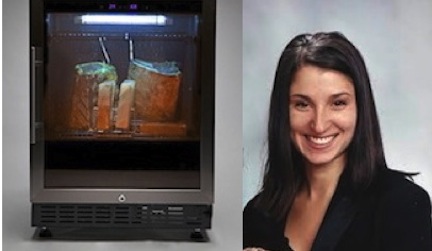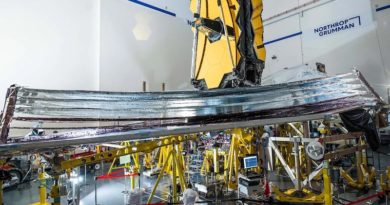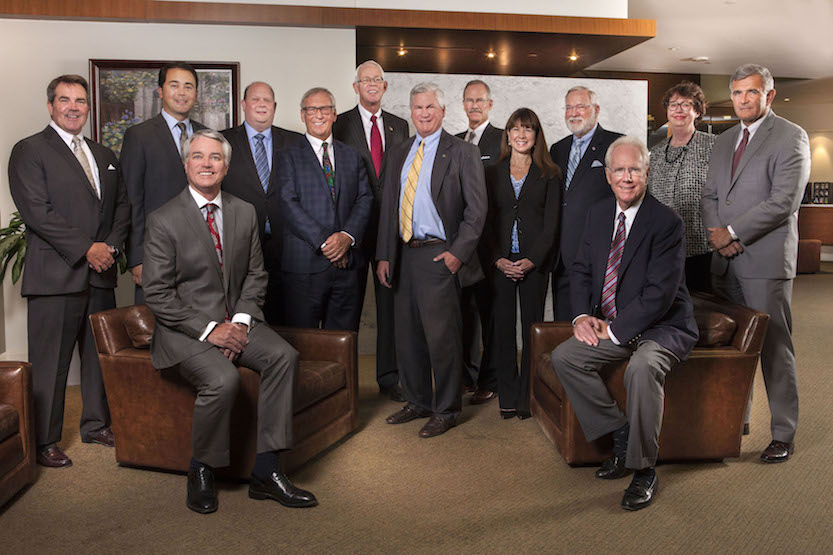Daily Business Report — July 11, 2014
Nadia Bruno and the Steaklocker, which she hopes to develop
San Diego Company Developing World’s First
In-Home Dry-Age Refrigerator for Consumers
Nadia Bruno, a San Diego entrepreneur, is developing the first commercially available dry-age refrigerator for the home chef. Called the Steaklocker, it combines the best of old world dry-aging techniques with sophisticated modern technology, allowing the consumer to control the process.
Not only that, but by purchasing the beef in supermarkets and butcher shops, and then dry-aging at home, steak-lovers can save 50-70 percent on current retail dry-age steak prices. “Steaklocker is going to change the way people dine at home,” said Bruno.
Dry-aging steaks is a relatively simple process that has been used in fine restaurants for many years. It creates superbly tender and flavorful steaks by letting naturally-occurring enzymes slowly tenderize the meat in a controlled refrigerated environment. The steaks will continue to become more flavorful for up to 90 days.
Unfortunately, this cannot be done in a traditional home refrigerator because the high humidity and fluctuating temperatures promote bacterial growth, which can ruin the meat and create health issues, such as foodborne illnesses.
Bruno and her technical team are developing a state-of-the-art digital hygrometer controller, which allows consumers to adjust the recommended settings that vary the flavor and tenderness of the meat. In addition, the Steaklocker will also feature a smart app that provides instant feedback on the temperature and humidity operations of the refrigerator.
Steaklocker recently had a successful Kickstarter campaign in the food category. It was No. 1 in San Diego and No. 11 in food for the entire history of Kickstarter campaigns. It raised over $191,000.
To help continued funding of this project, she has launched an Indiegogo campaign, which can be viewed at: www.indiegogo.com/projects/steaklocker-the-world-s-first-chef-inspired-in-home-dry-age-steak-fridge.
“We need help from steak-lovers to finish this project,” Bruno said. “We have suppliers waiting to manufacture the fridge and engineering partners ready to finalize the electronics and wireless applications.”
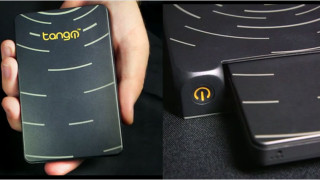
San Diego Startup Building Palm-Sized PC
A San Diego startup is using crowd-funding campaign to raise capital for the rollout of a palm-sized, fully-functional personal computer.
Tango Tech said Thursday it has already raised $300,000 on Indiegogo, and is taking the campaign to Kickstarter to raise additional funds.
The company predicts users will carry the device with them, replacing “the clutter of multiple desktops lying around in your home and office” with a single Tango PC and inexpensive docking stations.
The prototype is the size of a smartphone and weighs less than 7 ounces. Specifications include an AMD A6-5200 2 GHz quad-core processor,
8GB DDR3 RAM, 32GB SSD hard drive, three USB 2.0 ports, a USB 3.0 port, a HDMI port, headphone jack and internal Wi-Fi.
The tiny computer will run Windows 7 or 8.
The Tango PC is initially priced at $399 with docking stations $99 each.
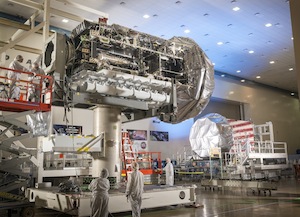
Environmental Testing Completed on Navy Satellite
Lockheed Martin has successfully completed environmental testing of the U.S. Navy’s third Mobile User Objective System (MUOS) satellite. It recently cleared thermal vacuum trials, which validate performance in simulated space conditions, and the satellite is now in final check out. The Navy’s Program Executive Office for Space Systems and its Communications Satellite Program Office in San Diego are responsible for the MUOS program.
“It’s important to check out every aspect of the satellite at this stage so we can prepare it for service. We are on track for delivering the third MUOS satellite to the Navy this year,” said Iris Bombelyn, vice president of Narrowband Communications at Lockheed Martin.
The Navy plans to launch this addition to the constellation in January 2015.
Lockheed Martin Space Systems in Sunnyvale is the MUOS prime contractor and system integrator of the five-satellite constellation, which includes four operational assets and one on-orbit spare.
Widespread Gains Predicted from Minimum Wage Proposal
The earned sick days and minimum wage initiative proposed by San Diego Council President Todd Gloria will result in raises for at least 172,000 San Diegans — more than enough people to fill every seat in Petco Park four times, according to an analysis from the Center on Wage and Employment Dynamics at UC Berkeley.
That’s the low estimate. With a minimum wage of $11.50 per hour by 2017, the number receiving raises could be as high as 214,000, according to the center.
On average, the raises will add $1,400 a year to the paychecks of employees now making minimum wage or slightly above it. Altogether that will put an additional $260 million a year into the pockets of low-income San Diegans, the center said.
“When hard-working people have the money to pay for their basic needs, they make more purchases and that money circulates throughout the local economy,” said CPI Research and Policy Analyst Robert Nothoff. “Raising the local minimum wage is not only the right thing to do, it’s smart economic policy.”
The Center on Wage and Employment Dynamics, which specializes in estimating the impacts of local and state wage proposals, detailed additional impacts of the San Diego measure:
An estimated 60 percent of people working in food services locally will get a raise by January 1, 2017, a larger proportion than in any other industry. In sheer numbers, the retail trade industry will account for the most raises.
Half of everyone working part-time (less than 35 hours a week) will get a raise.
Only 5 percent of those getting a raise will be teenagers; 85 percent will be between age 20 and 55.
El Cajon Will Let Half-Cent Sales Tax Expire
A half-cent sales tax increase that has netted El Cajon more than $100 million over the last decade will expire next year after the City Council voted unanimously not to ask residents for an extension.
The half-cent sales tax will expire on March 31 next year and lower El Cajon’s sales tax from nine percent to 8.5 percent, El Cajon officials said. The half-cent increase and its 10-year term were approved by voters in November 2004 as Proposition O, and the tax became effective on April 1, 2005.
At the El Cajon City Council meeting on Tuesday, the council voted unanimously not to ask residents for an extension of this tax. “We appreciate what the taxpayers have done for the improvement of this city,” Mayor Bill Wells said. “It is now time to end this tax for the benefit of our residents.”
The revenue raised from the tax specifically was earmarked for construction of a new public safety facility, new animal control facility, new fire station on East Madison Avenue and improvements to three other city fire stations, city officials said.
All of those projects have been completed, are under way or are set to begin construction in 2015.
— City News Service
Project Pie Adds Executives to Leadership Team
CARLSBAD — Project Pie, a build-your-own-pizza franchise, has named two restaurant executives to its leadership team. Brian Watkins serves as director of operations. He has worked for more than 25 years in the restaurant industry, the past 12 at Pei Wei Asian Diner in Southern California. As a partner with Pei Wei, he oversaw eight top-performing restaurants in the San Diego/Orange County market.
Steve Brigandi has been named chief administrative officer and general counsel. He has held various senior management positions with Jack in the Box Inc. Prior to his restaurant experience, he spent almost 15 years as a corporate and litigation partner with a San Diego law firm.
The company said it has perfected the “pizza quickie” — every custom-built pizza is cooked in two minutes in a high-temperature, stone-hearth oven and served to the customer less than five minutes from the time of their order.

Comic-Con Keepsakes — Lowdown on Some of the Best
With San Diego Comic-Con only two weeks away now, the buzz is starting to get hot and heavy about who to see and what to talk about at this year’s Con.


One of the things everyone wants from a good Comic Con? Exclusives that you can get only at the convention.
Whether you’ve got a coveted badge to go yourself or know someone who does and you want to urge them to get you something fun (or you’re waiting patiently to see your favorites pop up on EBay), here’s some of the comic books, art work, toys and more that will only be available at vendor booths at Comic-Con.
This selection — there’s a couple freebies! — range from $5 all the way up to a whopping $250. For more, check out Comic-Con’s Toucan blog.
Comic-Con starts July 24 at the San Diego Convention Center.
Here’s some basic facts about how the Con has exploded in popularity since it’s 1970 launch – with just 100 people when it was called a “Mini-Con.”
• There’s nothing mini about it now – it attracts well over 100,000 fans annually and injects millions of dollars into San Diego’s economy.
• The first convention was on March 21 way back in 1970 and was called San Diego Golden State Comic Mini-Con.
• About five months later, the first non-mini Comic-Con happened in August, attracting legendary sci-fi author Ray Bradbury. Attendance tripled, to 300.
• Comic-Con was known by one more name for one year, in 1972, San Diego’s West Coast Comics Convention, before settling on the moniker we all know and love.
— Times of San Diego

